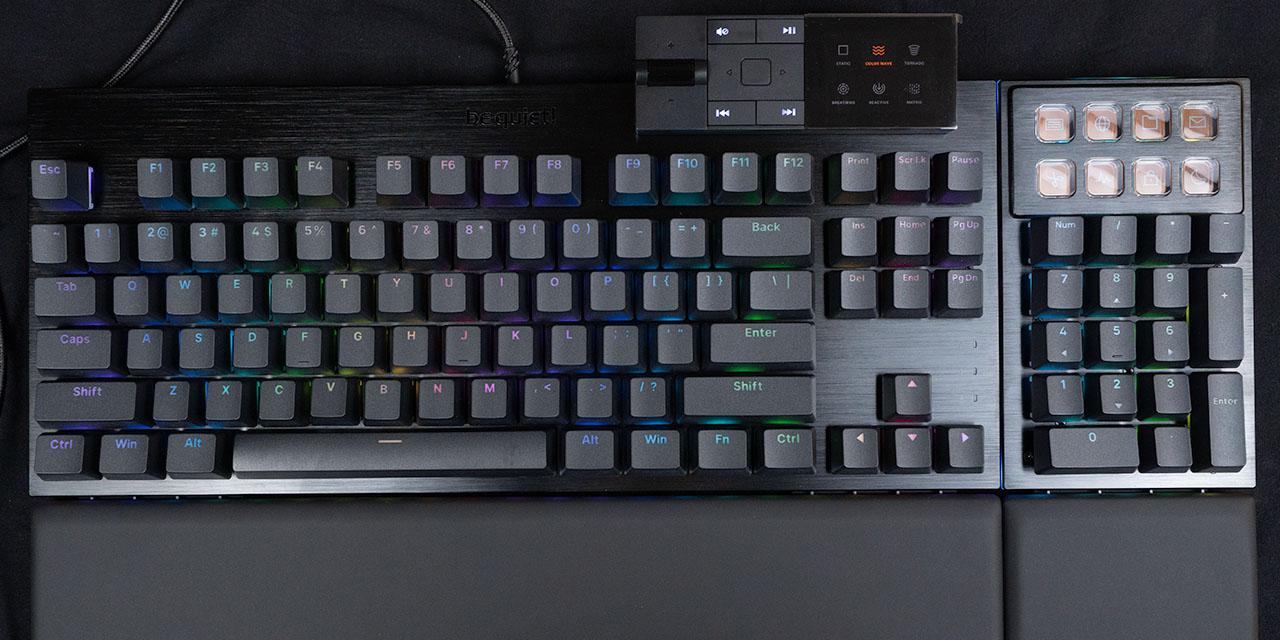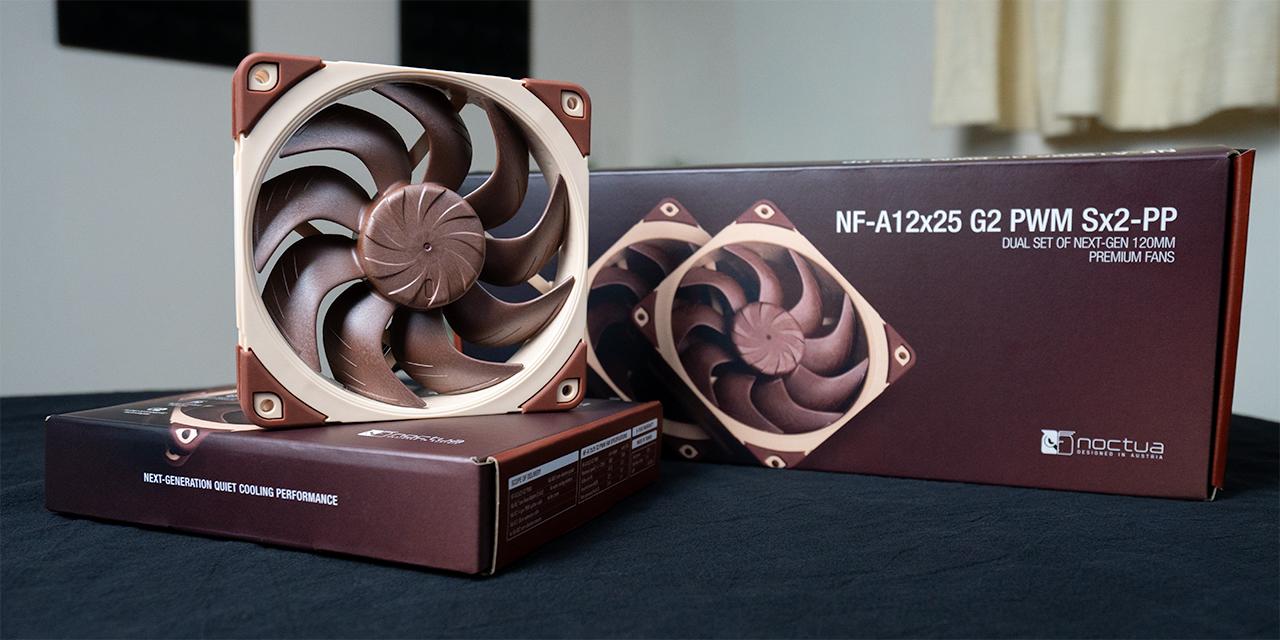Page 2 - A Closer Look - Hardware

The Epomaker Cypher 21 might just be a number pad, but Epomaker has done a few things to make it stand out. For one, the black exterior we have today looks really clean with its glossy piano black finish. This does mean it will attract fingerprints, but at least it looks nice to start with. There are thick edges around the keypad area, while a large screen stretches across the top. A plastic knob is on the right side of the number pad in the same black finish. Overall, the design of the Cypher 21 is a bit retro-like, especially with the large bezels, LCD display at the top, and the gradient gray keycaps. If you do not like this black and gray appearance, the Cypher 21 also comes in a pink version.
As for dimensions, the Epomaker Cypher 21 is 146mm in depth, 96mm in width, and 43mm in height. This cut down board might be small, but for the number of keys it has, it takes up more room than you might think. In terms of weight, this is 298g. Altogether, I can appreciate how solid it feels. The ABS plastic shell does not show any signs of flexing, but there is quite a bit of deck flex when pushing down the keyboard. This is due to the internal gasket mounting holding a polycarbonate deck.
The layout of the Epomaker Cypher 21 is standard-looking for a number pad, but there are a few differences from what you might expect from the right section of a full-sized keyboard. For example, the top row does not have a Number Lock, but instead, there is a backspace key. The bottom zero, which normally would occupy the space of two keys, is split into two keys, with the zero in the middle and an "AC" button beside it. These two buttons are necessary, because the Cypher 21 can function as a basic calculator if you desire. This is why there is a screen on top of the keys as well.

The only other additional inputs can be found near the backside. On the right corner of the Cypher 21, we have a rotating knob. When plugged into your computer, this acts as a volume knob. Pressing it toggles the backlight on and off. On the back, we have a power switch to turn on and off the Cypher 21, as well as a USB Type-C input for a wired connection. The number pad can also be connected to your device over Bluetooth. Internally, there is a 1000mAh battery, so you can use the Epomaker Cypher 21 without a power connection. Unfortunately, they did not provide estimates as for its battery life. Finally, there is a small speaker cutout, as there is a built-in beeper every time you press a key. This is a loud piercing noise I found a too shrill after a while.
When you switch the Cypher 21 on but do not plug it into a computer, it will automatically start as a calculator. However, when plugged in, it will first go into regular number pad mode. Holding AC down for five seconds will toggle the mode. Other function shortcuts include pressing AC and the backspace key to toggle the connection mode. Finally, AC and "-" lets you turn on and off the beeper, which is something I immediately disabled. Unfortunately, whenever you power cycle the Cypher 21, it will turn the beeper back on.

The underside of the Epomaker Cypher 21 has four rubber feet in the corners of the device. This ensures the number pad does not slide around. Furthermore, you can see the glossy black finish, especially with how reflective it is. On the lower half, we have a single label that has the Epomaker logo, product name, some regulatory certifications, and a note to say it is made in China. Otherwise, one thing that I could not find is a screw hole, even after peeling away the label and the rubber feet. The Cypher 21 is put together with internal plastic clips, so I could not disassemble the product without breaking something.

In daily use, the Epomaker Cypher 21 works as you might expect. When connected to a computer, it acts as a number pad, and it feels quite nice to type on. One thing that would have been nice to see is a small tactile nub that would normally be on the number 5 key to help users orient their hand with tactile cues. Otherwise, I did have to get used to a shorter 0 key, especially as I would accidentally press AC and wonder why nothing would happen. There is a white LED under each key for some backlighting, but it constantly breathes in and out with no option to change the effect.
In terms of its typing experience, the Epomaker Cypher 21 offers a good feel. These switches are the Epomaker Wisteria switches, which we will look further into later. What matters is these are linear switches with a nice feel. The typing sound can be heard above, and it feels consistent across all the 1U keys. Travel is smooth and does not feel scratchy, while the downforce required to press and actuate the key is not too heavy. The sound is a bit clacky and could be dampened a bit more if you want a deeper sound. There is a notable audible resonance that echoes in the body of the number pad. When you bottom out the key, there is a slight sponge-like feeling. The only key I do not like pressing is the long "+" and "Enter" keys, as they feel different from the rest. These are both stabilized keys, and it is possible the stabilizers are interfering. It requires a bit more downforce to actuate, and the sound is quite a bit softer too.
As a calculator, the Epomaker Cypher 21 is more of a mixed bag. On the one hand, it supports ten digits in the display, which is more than most basic calculators. It does do all basic arithmetic, including addition, subtraction, multiplication, and division. It also can calculate decimal and negative numbers. However, it does not always work when you push it to anything more complicated. For example, because there is no sign change key, entering a negative number is difficult. When you overflow the display on the positive end, it shows a large "ERROR" that only clears once you press "AC". However, if you go too negative, something wacky happens with the numbers. This is similar when you overflow the screen with an exceedingly small number. Obviously, the Epomaker Cypher 21 is not intended to be a mechanical switch calculator, but I would have liked to see it deal with these boundary situations better.
Page Index
1. Introduction, Packaging, Specifications
2. A Closer Look - Hardware
3. A Closer Look - Disassembly and Internals
4. Conclusion





